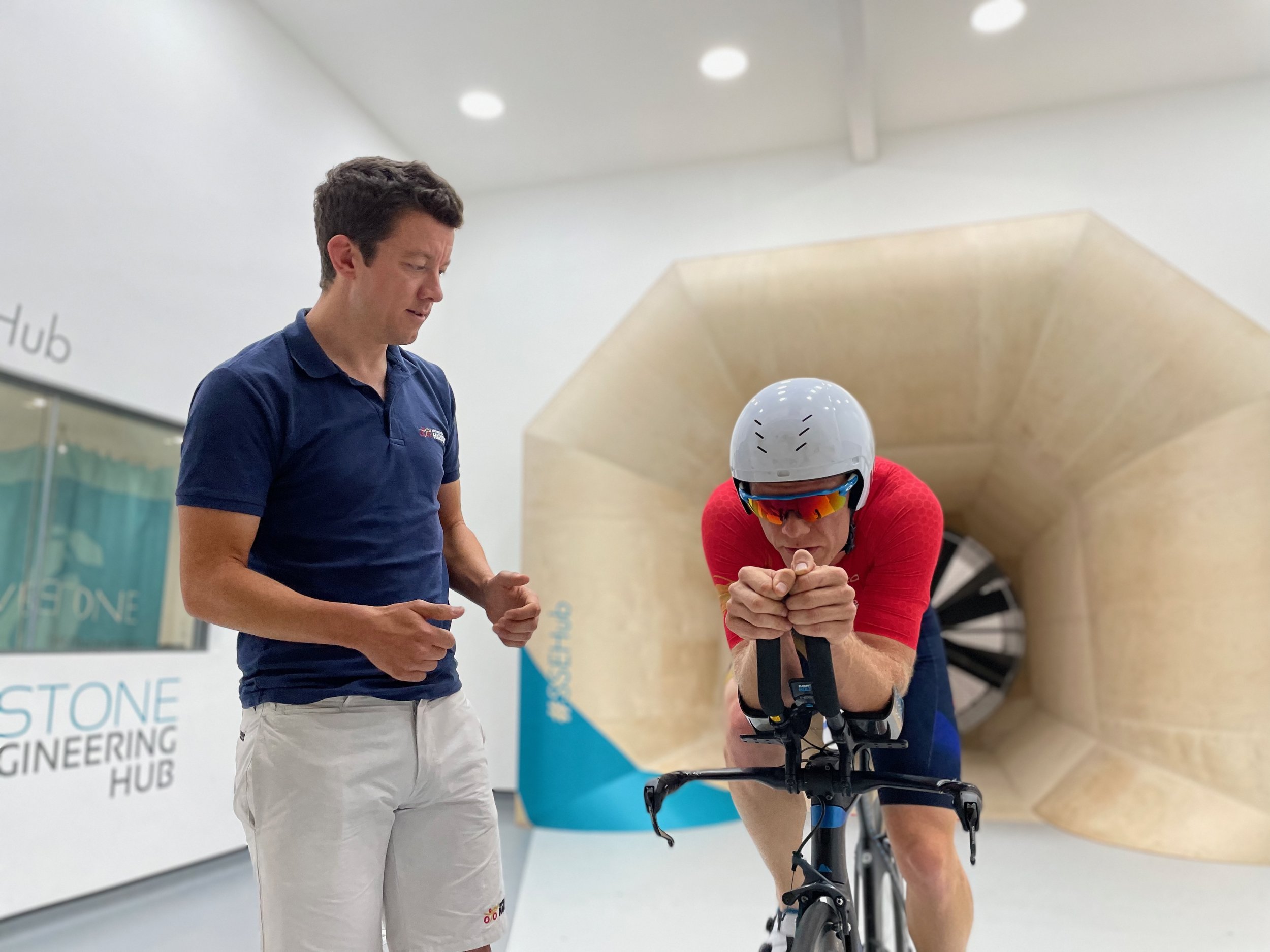What is a good CdA for a triathlete?
In this article, Coach Alan delves deeper into what a ‘good’ CdA is for a triathlete. In the last article, Tri What is better, more Watts or a lower CdA? we explored the relationship between aerodynamics and power. Now we apply that to the context of triathlon.
You will recognise the chart below from our previous blog. You will note that the exceptional triathlon number is perhaps not as low as you may think; 0.17m2 is often mentioned about pro cyclists. So you may ask yourself, why are these lower? One of the interesting factors has been the clear difference between some of the test numbers and ‘rumoured’ numbers of professional cyclists.
The answer is triathlon has different demands! Factors that may have an effect include;
Nutrition/Hydration carriage
Spares carriage
Potential lack of overshoes
Skinsuit that requires you to be able to stand up and run in / stay cool in
Duration of cycling time
Swimming is required
Upper body mass
Reduced mobility in the upper body
That last aspect is critical, as when compared to cyclists, triathletes will generally have more upper-body muscle mass, which causes drag. I can hear the thought already, ‘What if I can just be smaller? Surely I will go faster?’. Absolutely not, and that is because these things are not best communicated in absolute terms. Relatively, a triathlete with more muscle mass will potentially swim faster and be less fatigued from that swim when compared to a cyclist. Crucially, regardless of sport, a rider with a larger frontal area may be able to produce many more absolute watts to overcome their increased frontal area. It is for this reason that good climbers can still make strong time triallers; their wattage may be lower, but they are also physically smaller.
Recently I have seen numbers for Magnus Ditlev who is 195cm/6’4” tall, with the aerodynamics metrics as: 1954W/m2 and a CdA of 0.22m2. Tri Training Harder coach and pro athlete Will Munday sits at at 1500W/m2. However, their relative CdAs are likely to be in the region of 0.22 and 0.18. It is clear that a low CdA alone does not necessarily make an Uber cyclist.
Here are some other ballpark numbers that I have picked up from searching online; obviously, the accuracy of these may not be 100%, but they will be within some margin of error.
Sam Laidlow 0.222
Jan Frodeno 0.21
Fenella Langridge 0.209
From athlete data that I have personally seen, measurements vary from 0.17 and 0.27m2 and 1030 to 1370 W/m2 and varied from 52kg to 72kg and 165cm to 180cm across a range of athletes. If I told you that the lower CdA was linked with the lower relative value, you might believe me that aero is indeed not everything. It is an excellent example of reductionism to a single number being misleading in mindset and approach to performance. Aerodynamics are hugely significant, but ultimately, to extract the most performance from an aerodynamic position and equipment, it needs to be accompanied by significant power!
Remember, the key to the answer to this question is what is the best number for you that unlocks other aspects of your performance. Other factors also include;
Feeling confident
Familiarity with your equipment
Familiarity with your equipment in the course conditions
Feeling comfortable with your equipment
What enables you to focus on riding the bike fast
Picking a good line
Eating and drinking well
Putting down a consistent, controllable effort
Sitting still
Cornering well
Being in an optimal condition at T2 to run well
A good number is what leads to the best overall triathlon performance; for now, though, hopefully, you have a better global perspective and understanding of how a specific CdA number interacts with the rest of your performance. In light of this article, I also think in time for our reference, it will be worthwhile to develop a table that charts CdA in line with different heights or shoulder widths of athletes to model things a little further.
If you want to learn more about the wind tunnel experience, you can learn more about our services here.

Alan has worked with Tri Training Harder since 2014. During this time working with a wide spectrum of athletes from beginner, to youth and junior elite athletes through to 70.3 and Ironman AG winners and Ironman Kona Qualifiers.
An active Triathlon coach since 2007 Alan has been fortunate enough to work with athletes, peers and support staff who have continutally challenged him to evolve and develop. Building on a solid foundation in swimming teaching, Alan has specifically developed swimming coaching experience having worked in High Performance Swimming environments. Alan's other passion is all things fast on a bicycle!
Since 2015 Alan has worked in conjunction with the other Tri Training Harder Coaches to significantly develop collective coaching practice both on camp and online.
Visit Alan's
Coach profile
We’re here to help
Tri Training Harder are one of the leading Triathlon coaching providers in the UK, using our wealth of experience to unite scientific and technological research with already well-established and successful best practices, to create a formula for triathlon and endurance coaching that works.
The result is an honest, dynamic, yet simple new way of constructing an athlete’s training to allow them to reach their potential.
If you’re planning your next season, just starting out in the sport or are looking for extra guidance at the very top end of the field, we are here to help, and our coaches would be delighted to hear from you. You can contact us via the website, and one of the team will be in touch.



